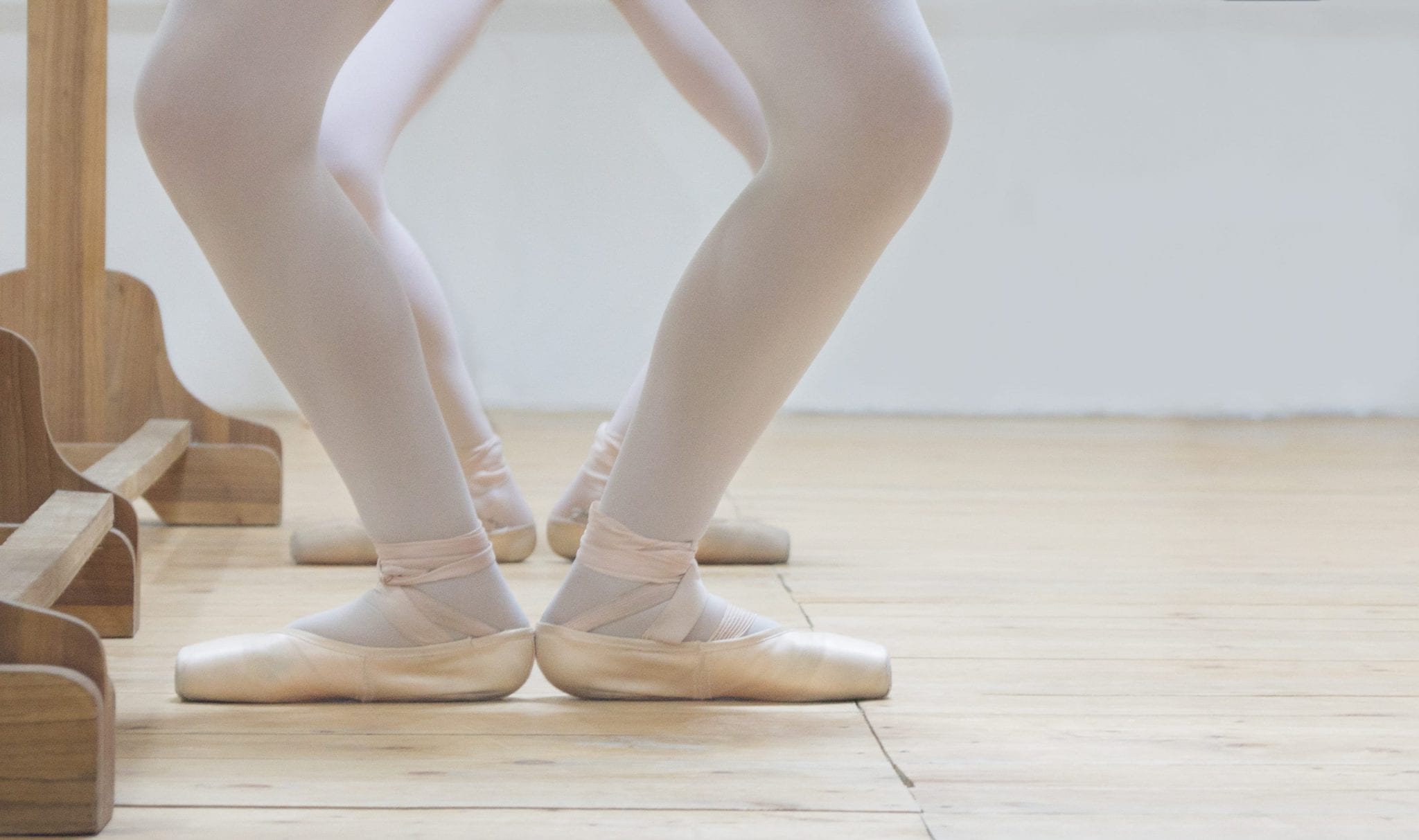
14 Dec Take your Plié to New Depths
Demi-plié and grand plié are among the most fundamental movements in ballet. They are essential to the physicality and artistry of the dance form. However, since every dancer has a different body, some can improve their flexibility faster than others. Does it mean you have to settle for a shallow plié? Absolutely not! “Many dancers can improve the depth of their plié through persistent stretching and careful attention to optimal body alignment,” says Karen Clippinger, a professor at California State University and author of Dance Anatomy and Kinesiology. Since most workouts focus on the repetition of flexing and extending the muscle (or group of tissues) that want to be activated, you need to find the right movements that will assist you in improving this important movement. BFW shares three exercises that can help you discover your full range of movement. All you will need is a half-inch or one-inch thick book and a stretch band.
Calf Stretch Series
- Place your hands on a wall (or a barre) and stand with one foot about 12 inches behind the other, with the ball of the back foot resting on a thin book. Bend the front knee as the back heel slowly presses back and down toward the floor, until you feel a stretch in your calf.
- From this position, press the ball of the back foot down for about 5 seconds (contracting the calf muscle) without allowing any visible movement.
- Then, relax the calf and bend the front knee further as your weight shifts slightly forward to deepen the calf stretch on the back leg. Hold for about 20 seconds.
- To stretch the soleus, the deeper calf muscle used during pliés, repeat the above steps with a bent back leg.
Wall Pliés
- Stand in the second position with your back against a wall and your feet slightly away from it. Slide down the wall to the normal stopping depth of your plié.
- Experiment with shifting your weight on your feet, rolling them in and then out.
- Find the correct alignment of the feet while in plié. Your weight should be divided equally between the heels and the front of the feet, with all toes firmly in contact with the ground. Place a little more weight on the big toes rather than on each of the four smaller toes.
- From this position, let your leg muscles yield a bit so that you smoothly sink into a slightly deeper plié, with your knees reaching over your toes. Repeat this sinking motion 3 times and then rise while keeping the feet stable. Do 4 complete sets.
- Next, test out your plié in one smooth downward-and-upward movement using the increased range of motion. Then, plié away from the wall with your side to a mirror, incorporating what you’ve just practiced: Try to keep the torso vertical, weight centered on the feet, and knees over the toes. Over time, try this technique with pliés in other positions.
Resistance Band Turn Out
- Tie the band above the knees and support yourself on your elbows.
- Reach both legs apart in parallel, then externally rotate the legs and separate them further, staying turned out and working against the band’s resistance. Focus on using the deep turnout muscles underneath the gluteus maximus and at the base of the buttocks. Pause for 4 counts.
- Reverse the motion to return to the starting position. Repeat 10 times.
- Next, stand and repeat the wall pliés (exercise 2), but let the knees collapse in as the ankles roll in. Then, use your deep turnout muscles to help guide the knees over the feet as you perform your desired plié with a stable position of the ankles.
